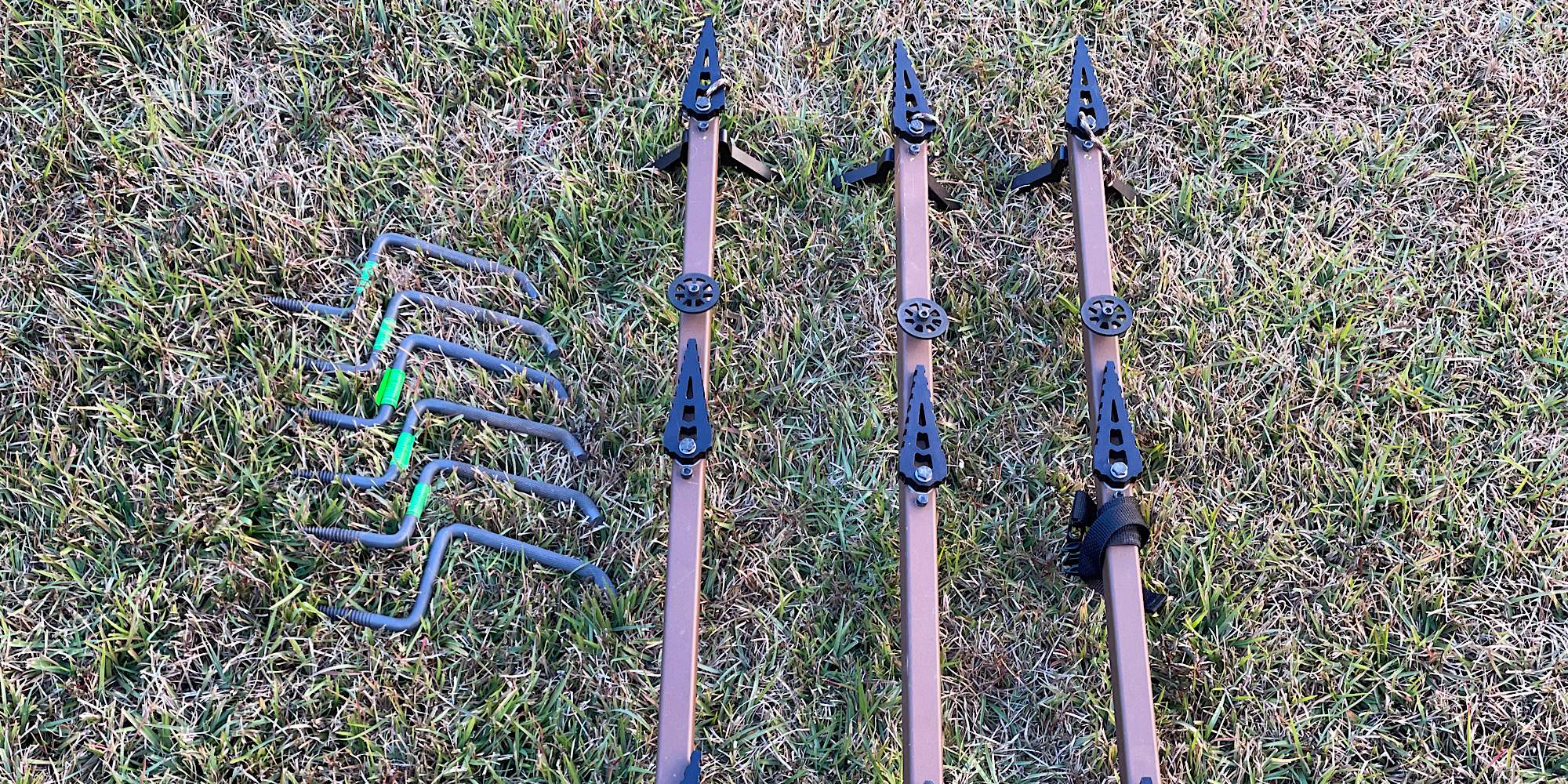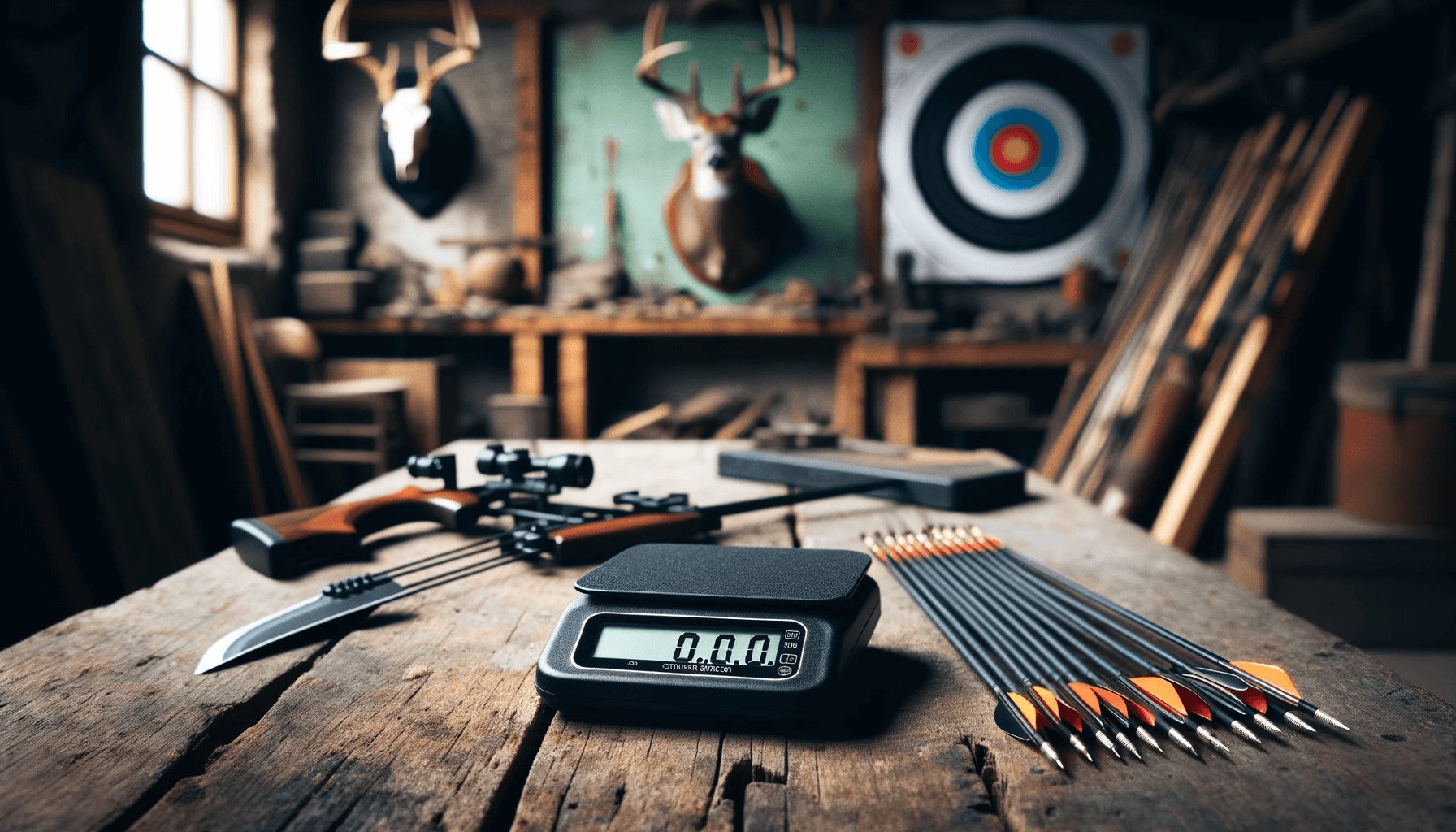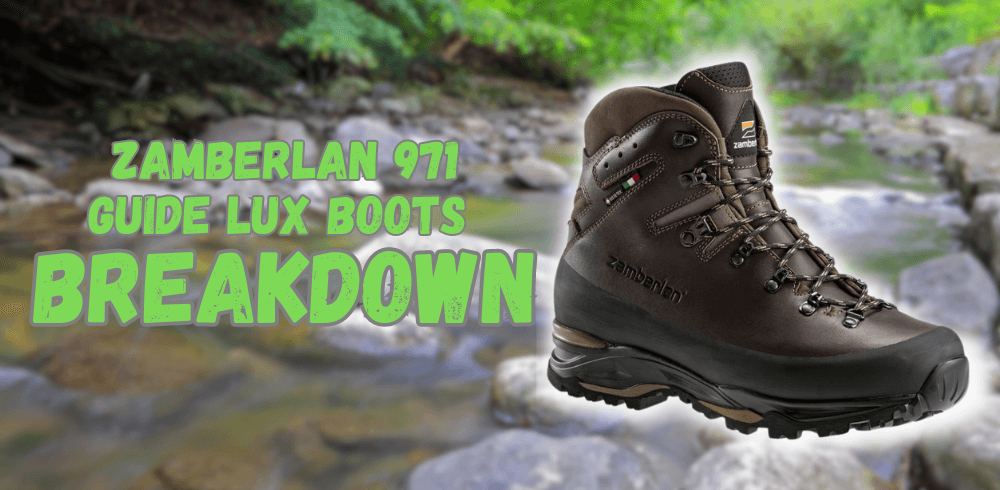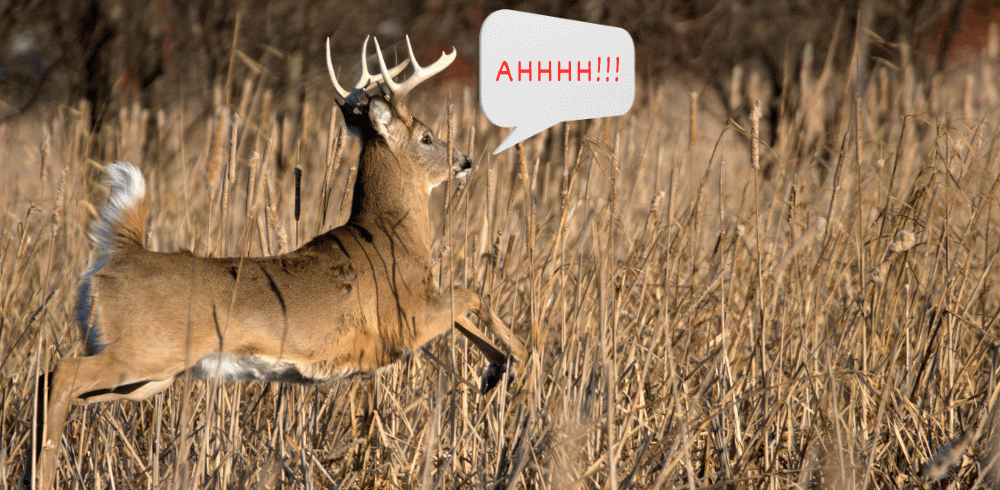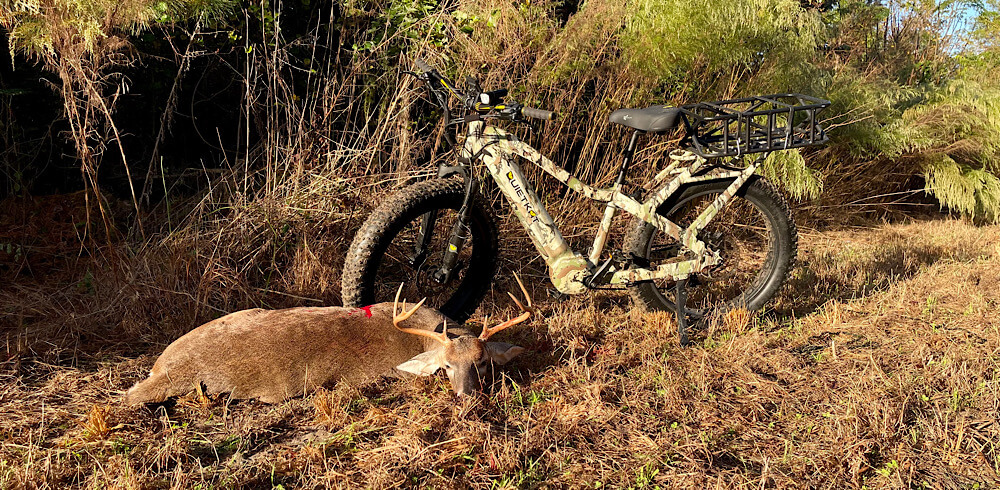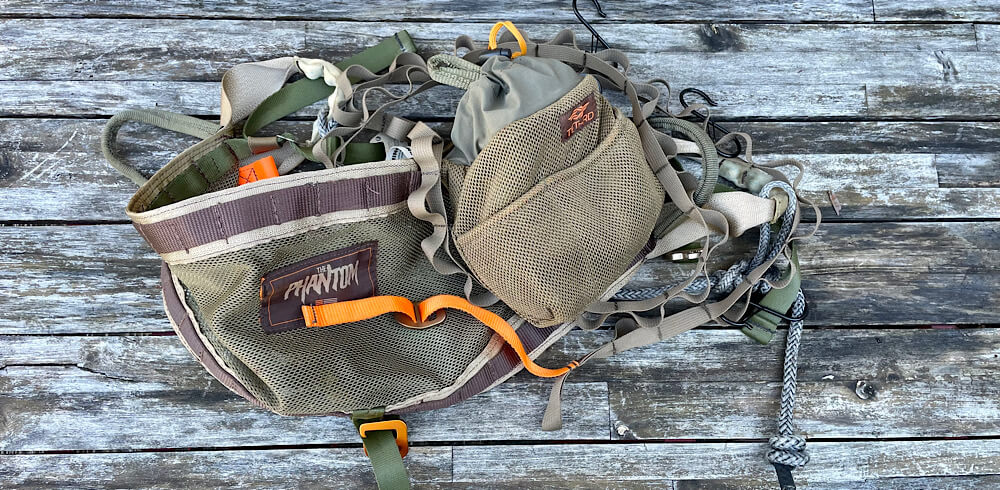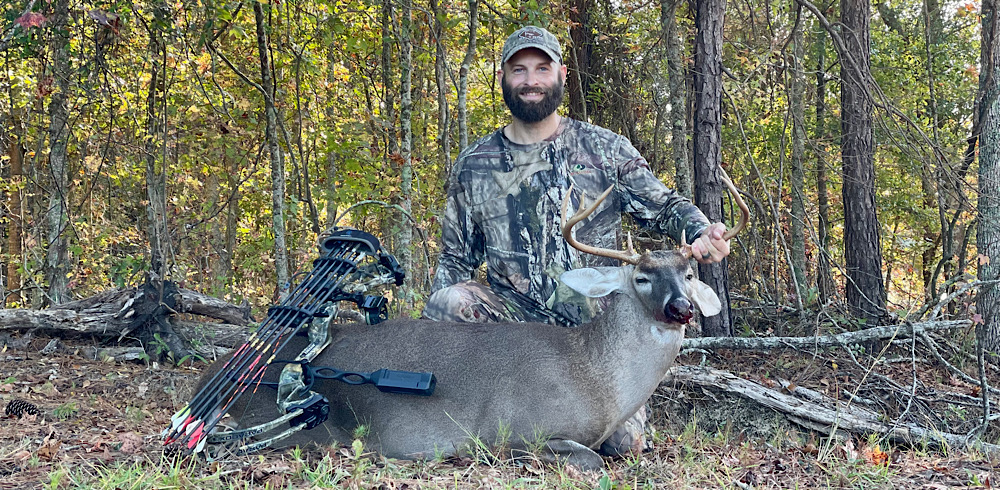The Great Debate
There’s no doubt about it, the absolute best place to kill a deer is somewhere in the ballpark of 18-20 feet up a tree. No matter if you’re hunting a marsh, open timber, thick cover or the edge of a food plot, being nestled in a tree makes it harder to be spotted by your four-legged quarry. And when using thermals to your advantage, your scent has the potential to blow right over top of any deer that may happen to slip in downwind of your setup – an added benefit to getting up off the ground. Now, arguments can be made for the occasional ground hunt, but for sake of this article, we’re going to stick with the tried-and-true method of hunting from a tree. The only question is how you’re going to climb. In the battle of climbing sticks vs screw in steps, who comes out on top? Like all questions pertaining to the gear-intensive sport of hunting, it just isn’t that simple.
Why Are They Necessary
Saddles, hang on stands and homemade stands are all great setups. They greatly differ from one another, but they all have two things in common. They all have you hanging from a tree, and they all require some additional equipment for climbing the tree. We’ll be focusing on the latter. The two most widely used methods for climbing a tree are climbing sticks and screw in steps. Let’s start with climbing sticks.
Can’t stand the thought of packing in an additional piece of equipment to get up the tree? A climbing stand may be exactly what you need.
Climbing Sticks
Climbing sticks are the preferred choice for mobile hunters because of their lightweight versatility. Different models come in 3- or 4-stick packs, varying in overall length, as well as the height between each step. Some sticks are single-step, meaning as you climb, you’ll place one foot on a step with nowhere for your other foot to go except up to the next step or down to the previous one. Others are double-step, meaning each time you place your foot on a step, there is another at the same height for your other foot to rest on. The benefit to a double-step is that once you reach hunting height, you’re able to stand with your body weight distributed evenly upon two level steps while hanging your stand or platform. The drawback is added weight that isn’t completely necessary, and additional steps that can be snagged on branches walking through the woods. Single-step climbing sticks can get you to hunting height with less weight and less protruding off of them. Another benefit to climbing sticks, in general, is the way they stack on one another for easy transport to and from the tree. Stackability is basically a universal feature among all major stick manufacturers, but Lone Wolf takes it a step further. Lone Wolf climbing sticks are made compatible with their hang on tree stands, allowing the sticks to snap on to a quiver that attaches to the stand so the sticks and stand are one compact package. That is one of the draws to owning the Lone Wolf sticks and stand, along with their incredible quality.
Perhaps the biggest draw to climbing sticks in general, though, is the speed at which you can get up a tree using them, with nothing having to be screwed into the tree, which is prohibited in some states, particularly on public land. With all the benefits of climbing sticks, if the initial cost is more than you’re willing to shell out or you’re looking for something with a slightly smaller footprint, screw in steps could be what you’re looking for.
See the best climbing sticks on the market here.
Screw In Steps
Before using screw in steps, check local regulations for where you’ll be hunting, whether on public or private land, to make certain that screwing into a tree isn’t prohibited. Here in South Carolina, you can screw into a tree on private land, but not on public. Screw in steps do offer a little more versatility than climbing sticks, due to the fact that each step is placed completely independent of the one before and after it. Because of this, minor changes in elevation and lateral movement can be made with each step. The biggest downside? The time and effort it takes to use them. Screwing in steps is no easy task, and in the Southeastern heat of late summer, fall and even early winter, be prepared to drip sweat and create more scent while working your way up a tree.
Some tree species are easier to screw into than others, while some can be downright exhausting. And even though screw in steps each have a very small footprint and can be packed in easily and even carried in your pockets, unless you do some serious taping/padding, you’ll have to move with extreme caution to keep from making that dreaded metal-on-metal clanking sound as you walk in and work your way up the tree. Now, before we totally write off screw in steps entirely, there are some benefits to having some on hand. First, one or two can be used in conjunction with climbing sticks to fine tune the height of your setup. Say you get three sticks high and realize that if you were just 18 inches higher and 15 degrees further around the tree, you’d have the perfect setup with an additional shooting lane over top of a branch. You can use one screw in step to get you there before attaching your saddle or stand.
Another use, and perhaps the most practical, is to use screw in steps on a pre-hung setup. If you know you’re going to be going into a certain location at some point in the future, say maybe to hunt an oak bottom when the acorns start falling, you can go ahead and screw in your steps and hang your set. That way, you’re able to get into your stand quicker and with less noise when the time is right. You can even remove the bottom step or two when you leave to keep them out of sight and smell for any deer passing through. Then, when you return to hunt, simply screw them back in with ease into the holes that you previously made. On public land where screwing in steps is allowed, backing out a couple of steps on a pre-hung set will discourage other hunters from using and/or stealing your setup.
See the best screw in steps on the market here.
So, Which Is Best?
We may need to stop saying climbing sticks vs screw in steps and start saying climbing sticks and screw in steps because one is not necessarily better than the other for every hunter and every situation. Sometimes, you just have to choose based on your own personal needs. When deciding which climbing method is best for you, there are several things to consider. Are you primarily mobile or do you prefer to hang all your sets pre-season? Will you be hunting private land, public land or both? Is screwing in legal where you’ll be hunting? What can you realistically afford? Climbing sticks may be your top choice, but the higher cost may be a barrier that makes screw in steps, if legal, your best option. Are you physically fit enough to screw in every step as you make your way up a tree to hang a set? Only you know what would be best for your style, your abilities and your wallet. Can’t make up your mind? You can always try one method this year with the mindset that if you don’t love it, you can budget to try the other next year.

